The same CDJs and mixers might dominate most booths, but some DJs do things differently. Kristan Caryl finds out about the joys of Klipsch sound systems, rotary mixers, modified turntables and lollipop headphones.
The last few years have been characterised by an increased fascination with hardware. Producers young and old have been on a quest to search out all sorts of music-making tools that hark back to the earliest days of dance. Sometimes it’s simply a quest for producers to get out of the box, but for others it’s a move made in search of authenticity and realness. Well now, DJs have caught up. Rotary mixers are all the rage and old-school DJ lollipop headphones are much sought after. Specialist audiophile listening spaces such as London’s Spiritland and Brilliant Corners have popped up, and DJs are increasingly keen to explore alternatives to the conventional club turntables and sound systems. We decided to investigate this trend by speaking to users of all this equipment and more. We ask about the whys and hows, seek out the pros and cons and try to understand what, if any, difference this makes to your listening experiences.
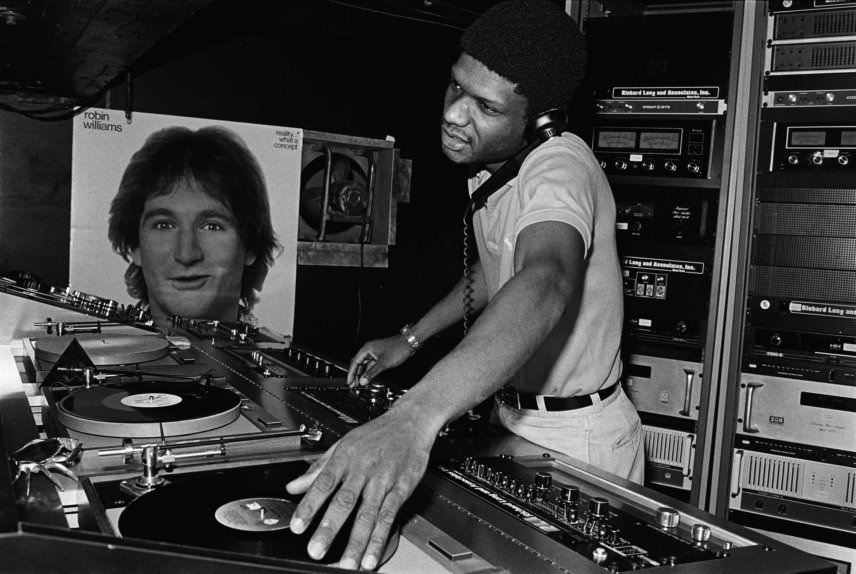
The inspiration: Larry Levan in action with rotary mixers at Paradise Garage, 1978
SPENCER PARKER ON ROTARY MIXERS
The Berlin-based party starter and Work Them label boss espouses the virtues of his Alpha Recording System 6700, but also has some words of warning.
I think the first time I played on a rotary mixer was in the main room of Ministry Of Sound, where I think they had a Urei. This was back in the day when the big guests there would be David Morales, Francois K or Tony Humphries, and then Harvey was resident on the Fridays, so it was a little while back! Playing a rotary on that system, in that room, was definitely a baptism of fire. I found it tricky at first, but I got used to it pretty quick and really enjoyed the smoothness of how you can mix with a rotary.
To be brutally honest, I’m not the sort of person that can A/B two very similar mixers and tell you which is which. I love playing on rotaries and I have one at home, but I’m equally able to play on an Allen & Heath or Pioneer. For me it’s more to do with the physical nature of using them, and, obviously I can appreciate the great sound also. Personally, I have the Alpha Recording System 6700 mixer with their 3500 isolator. For me it was the only solution because I like to play house, techno and disco so I really like having a three-band EQ on each channel. It’s possible to use the isolator when mixing but there will always be a time when I want to mix one track over another with the bass out on one of them (especially when playing techno), so the EQ on each channel was a deal breaker for me.
For some DJs it’s a complete fucking pose to only want to use a rotary mixer to try and come across as more 'real', desperately aping their heroes from Detroit or Chicago
The pros of using a rotary would be the feel of them, how smooth it is to mix with them and, sometimes, the sound quality. The cons would be that, if you’re not used to playing with them, they can be a little tricky to use at first, and it’s hard to rapidly cut between records in an aggressive manner, simply due to the fact that slamming a fader up fully is easier than the turn of the wrist needed to turn down a rotary channel to zero and then back to exactly just past seven in a millisecond.
I don’t think they force you to DJ differently, but I guess it’s fair to say it’s definitely a simpler way of playing than with a mixer with a lot of effects. I like to EQ a fair bit when I play, I use an isolator if there is one and I sometimes use a loop machine as well. But whenever I hear a DJ playing a set and really killing the effects on every single record to create drama and tension, I often just think, “Wouldn’t it be interesting if you could do the same thing, but only with your records…?“ If a DJ is smashing effects over every single track and mix it’s like a huge safety net – people will normally react if you put a huge delay or white noise over every single record. The question is: can you get a reaction without doing that? Are your records so good that they can do that alone?
I think it’s also important to see that for some DJs it’s a complete fucking pose to only want to use a rotary mixer to try and come across as more ‘real’, desperately aping their heroes from Detroit or Chicago, but with none of the talent, soul or feeling to back it up, as if only wanting to play on a rotary makes them more legit.
For more from Spencer Parker, find out his thoughts on what makes a great DJ.
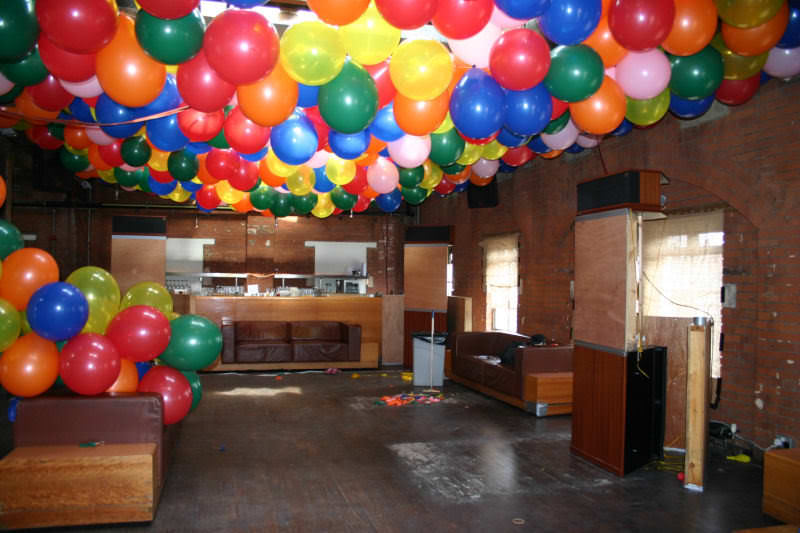
Klipschorn speaker setup at one of David Mancuso’s Loft parties
ORPHEU THE WIZARD ON KLIPSCH SPEAKERS
The Red Light Radio co-founder speaks about the prized pair of cult speakers he has at HQ.
The first experience I had with high-fidelity club sound was roughly 10 years ago in New York. My friend Jacques Renault used to play a weekly Tuesday night at a tiny club called 205. The sound was done by Gary Stewart Audio and was unlike anything I ever heard: a crystal clear, physical and three-dimensional sound system in this tiny space changed my perception of what sound can do in a club. In this same period I saw Harvey play in Club Love, where there was a similar sound setup, but way bigger.
My first experience of Klipschorns in a home setup was years later in Los Angeles at Zach Cowie’s house. He has the absolute perfect setup in terms of Klipschorns, McIntosh amps and turntable. We had a mind blowing listening session there. The sound is very organic and incredibly clear. You can almost ‘see’ the separate sounds, where they come from and where they go. The most striking thing about it is that you can actually remember how it sounded – not the song you play and how it went, but how the sound reached your ear and its characteristics. The first time I actually got to play a Klipschorn setup myself was quite recently in Brilliant Corners in London. It’s an amazing place, run by great people, and the sound system is pretty much flawless.
Klipschorns were used at David Mancuso’s Loft parties, which are considered by many to be the birth of modern-day club sound.
Klipschorns are of course famous for the fact that they reproduce sound with an amazing dynamic and because the design hasn’t changed over the last 65 years. The speakers are still relevant to modern disco and dance music because they were used at David Mancuso’s Loft parties, which are considered by many to be the birth of modern-day club sound.
We got our own pair of Klipschorns at Red Light Radio HQ with a lot of luck. For a few years I kept an eye on the local auction websites, but they rarely pop up in the Netherlands and when they do they are often very expensive, plus they are crazy heavy so don’t even think about shipping them! I guess you are lucky if you find them here for two or three grand a pair, but to pay more is not unusual. This pair was listed by a thrift store in Holland – they got them from a house clearance when the owner died. They were in great condition and the store was happy to sell them to us for a great price when they saw our faces explode with happiness after listening to them in the shop.
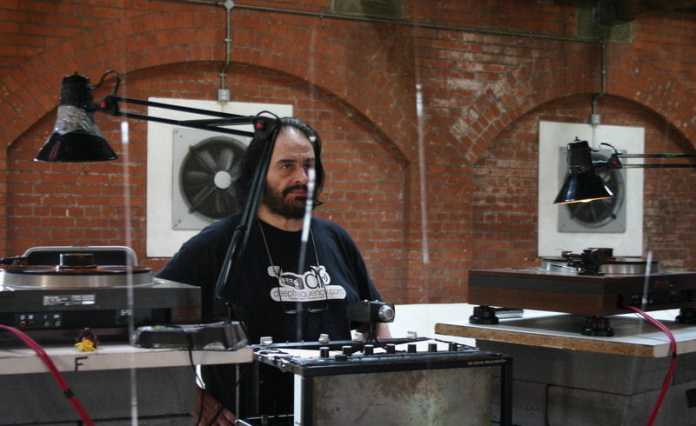
David Mancuso in action with customised Technics turntables
RYAN SHAW ON MODIFYING TECHNICS DECKS
Ryan’s Mastersounds brand offers rotary mixers and modified turntables. He believes the SL-1200 can be taken to the next level with a few modifications.
The Technics SL-1200 MK2 has a ubiquitous reputation as the number one turntable for DJs in the world, and rightly so as it’s built to take the abuse many DJs throw at it. The SL-1200 was originally intended as a hi-fi turntable but soon found favour with disco and radio DJs with its strong direct drive motor and +/- 8% pitch control enabling smooth mixing between records of differing tempo.
From my own perspective the main issue I have with the turntable is when it’s used for audiophile applications. I can hear the internal PSU degrading the sound of the music as the record plays, hence I remove the internal power supply, and fit my own external PSU, which ensures a more natural sounding image with deeper sound stage and lowered noise floor.
The original S-shaped tonearm can also sound dull in comparison to an upgraded arm. I had been interested in modifying turntables for over 10 years [before I started modifying Technics], so I knew from research that the RB-250 was a great arm upgrade. I had formerly owned belt-driven audiophile turntables, including one with a Rega RB-250 tonearm. Rega have manufactured hundreds of thousands of their die-cast tonearms for over 35 years and have been a favourite for modification. Sound for pound (starting with the RB-202) they represent a great upgrade for the money and have good compliance with a wide range of cartridges.
Technics have manufactured millions of units and made a product that was built to last.
A hi-fi tonearm essentially does the same thing as a budget arm, however the more expensive tonearms are exquisitely built using quality materials and feature high quality bearings and cabling to ultra-fine tolerances. There are lots of tonearm manufacturers producing some weird and wonderful designs including carbon fibre arm tubes and linear tracking tonearms. Manufacturers including Jelco and SME both produce beautiful products. There are many technical differences between different manufacturers but the higher up the scale you go, the finer the product.
The original Technics rubber mat is designed for listening to music and not DJing as it’s made of thick rubber and doesn’t enable back cueing of the platter. A thick rubber mat does enable a better soundstage from the turntable; users can also try an array of mats including cork and acrylic, which can improve the quality of sound depending on your system.
There are lots of turntables available on the market which are suitable for DJing, and a plethora of audiophile turntables to suit most budgets, but I personally believe you can’t find a better turntable than an SL to DJ with due to the quality of manufacture and rock solid performance. If you think about it, Technics have manufactured millions of units and made a product that was built to last and can be serviced and repaired relatively easily.
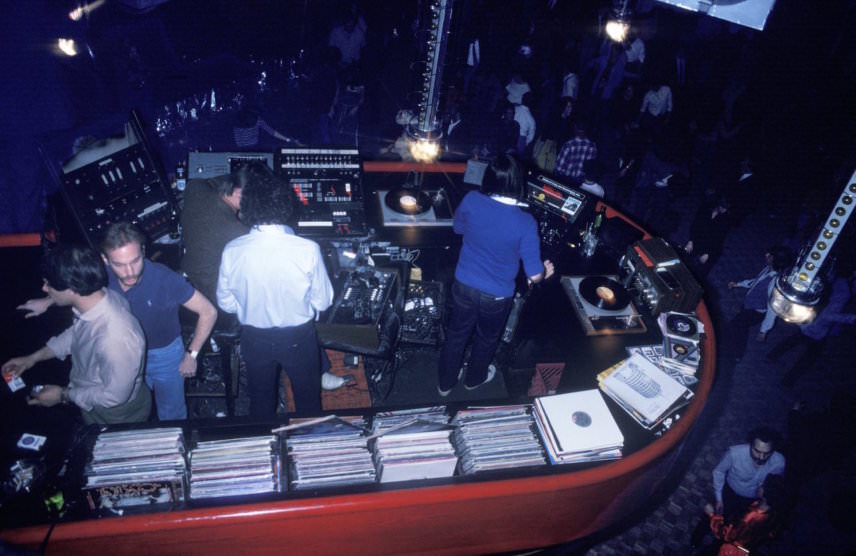
The DJ booth at Studio 54, 1980
LOCKED GROOVE ON ROTARY MIXERS
Hotflush Recordings artist Locked Groove reckons rotaries force you to think more about track selection.
I think the first time I played on a rotary mixer was somewhere around 2012. It was the rotary version of an Allen & Heath Xone:92, so not a ‘real’ rotary, but I liked the way it handled, so that’s when I started looking into them a bit deeper.
Like fader mixers there’s also a lot of bad rotaries around. But I’d say the flow of just having to do the same action for everything appeals to me the most. I’ll use whatever mixer clubs give me. I like it that way because I get to explore different techniques with every mixer. I don’t really have a favourite one, but a Condesa Lucia is close to being my favourite. I don’t think there’s such a thing as the best mixer, it’s a matter of taste. Some people like a very clean, flat sound response, some people like something that adds a bit more colour. This is usually also where they differ from each other – sound colouring. What I’ve noticed is that if I play a rack version rotary, I start to mix slower and put more care into my mixes.
Using rotaries, you have to be a bit more focussed, although when you're used to it it’s the same as any other mixer.
I’d say if you’re a turntablist rotaries are not really for you – you can cut pretty easy with a rotary but not to the extent that you can juggle channels around. The more general advantages are that your mixes will become very smooth if done correctly. If it’s a good rotary that’s tuned for the system, the sound quality and punch it will add are great.
Using rotaries, you have to be a bit more focussed, although when you’re used to it it’s the same as any other mixer. You can use an isolator to make some nice transitions or keep it clean. They usually force me to think about my track selection and the combinations I make as you don’t usually have a full EQ cut per channel as on most mixers. It does force you to go back to basics.
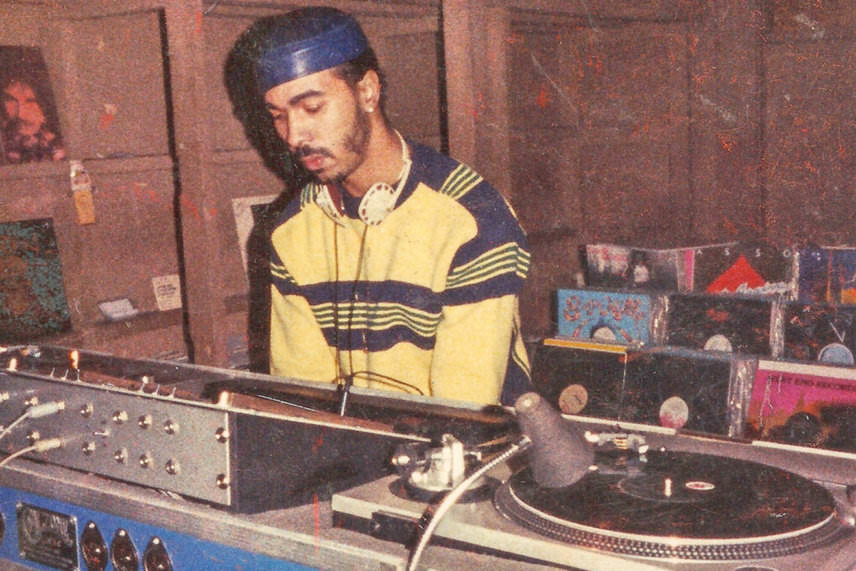
Ron Hardy at Chicago’s Muzic Box
AYBEE ON LOLLIPOP HEADPHONES
Deep and spiritual house artist Aybee loves the smoothness of using a custom lollipop headphone.
I was introduced to the lollipop when I joined the old Nulife crew back in San Francisco early last decade. Everyone had one. They all were descendants from the NY Shelter/Sound Factory Bar era so it was the tool of choice. On the same day I was handed a lollipop, I stepped up to a Bozak mixer, and the sound was coming through a pair of Klipsch La Scala speakers. The game was never the same after that.
After the first mix I was sold. It was different, but I felt like I had more control. It was smooth. What appeals to me is that you get the mix set then pull the headphone away as needed. Very smooth. No need to pull the headphones off your ears, which is how I broke two pairs of my previous headphones.
I think lollipops are now a total fetish. It's like, 'Look at me, I'm special! I'm more than you!'
I think it’s more of a comfort thing, not really about sound quality. Since I built up years of muscle memory with one I am far more comfortable with it. But I can’t say it helps you mix better! I found that when I moved to Berlin – the power and acoustic differences in certain booths definitely pushed me off of mine. Coupled with ear damage I sustained, that made me fall back on headphones.
It’s a myth that your neck hurts using lollipops. I hold it to my ear, keep my neck straight and do the work with the free hand. It’s not efficient, but like I said you get the rhythm over time. Mine was made in 2003 by David Meza out of LA, who runs Duo Audio. He can take the headphone of your liking and convert it into a lollipop. He was the first guy to add the XLR cord so that you could replace it easy.
I think lollipops are now a total fetish, as with many [unusual pieces of DJ equipment]. It’s like, “Look at me, I’m special! I’m more than you!” It’s funny because four years ago my agent said I might as well take those Ureis, Bozaks and Vestax R1 mixers out of my rider because no one in the EU will have them. I remember other DJs curiously laughing at my lollipop… Funny how times change.
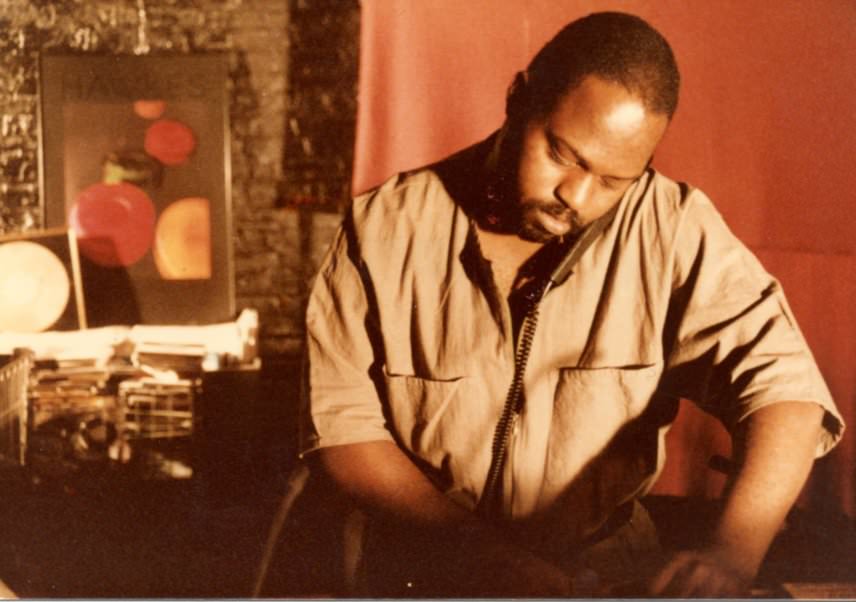
Frankie Knuckles (with lollipop headphone) at Chicago’s Power Plant
RYAN SHAW ON ROTARY MIXERS
Ryan has custom built his own rotary, the Radius 2, with Andy Rigby-Jones of Union Audio.
I think that rotary mixers have gained popularity again recently because more people want to have better sounding setups at home. I deal with customers on a daily basis who are interested in audio upgrades and central to the setup is usually a rotary mixer. Going back to the 70s and the original disco era, DJs like Larry Levan of the Paradise Garage in New York were obsessed with sound; Larry’s choice was to play disco through a rotary mixer and a great sound system.
With disco being the genre of choice for many DJs, it’s a natural movement to want to play these records as the original DJs did back in the 70s. It’s not all about disco though; lots of genres have adopted the rotary way of mixing. There is something great about having a bag of records, a rotary mixer and good sound that seems more pure than using faders.
DJs like Larry Levan were obsessed with sound; Larry’s choice was to play disco through a rotary mixer and a great sound system.
I speak with customers every day who don’t want to meddle too much with their music, they just want to hear their records sound as good as they can and mix them using a quality piece of audio equipment. I believe there is plenty of space in the market for DJ mixers with lots of effects, but for me it’s more about the quality of sound reproduced.
Having used every mixer under the sun with lots of features I didn’t use, I wanted to make something really simple with emphasis on the sound. For instance, there isn’t any EQ on each channel of the Radius 2; in its place is a natural-sounding high-pass filter which enables the user to create really seamless mixes. The master EQ on the mixer is then used to add or subtract frequencies to get the balance right when the music is playing through the speakers. The master EQ is also used as an isolator, giving the DJ lots of scope in the mix. The Radius 2 has a fully symmetrical audio path, originally developed for ultra high-end 70s recording desks, and this topology contributes to the superb transparency of the mixer.
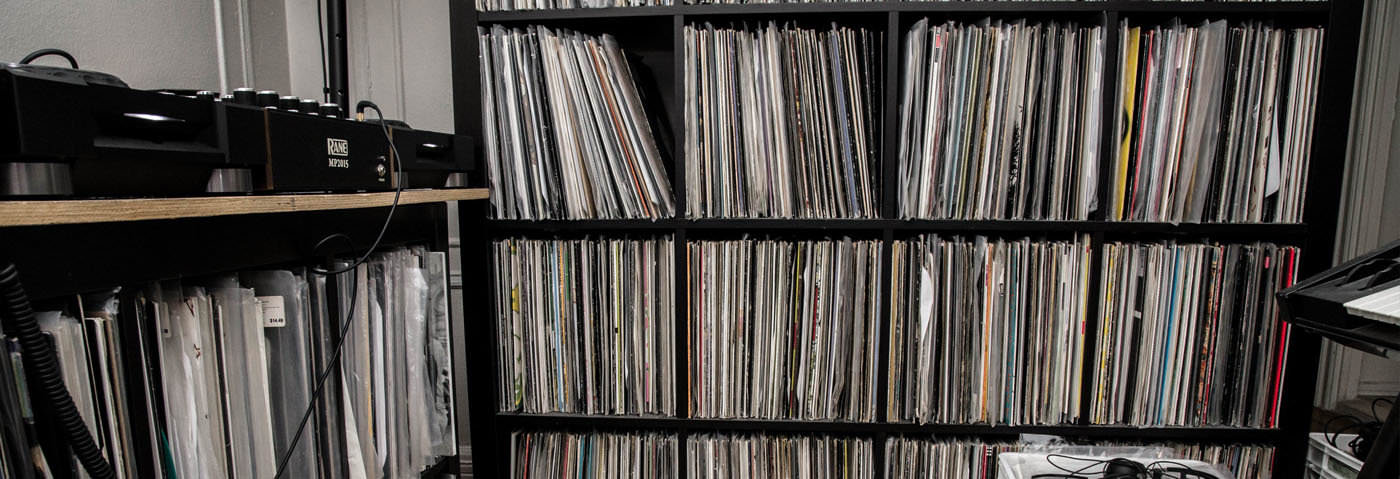
03.21 PM
What about DACS? I’ve been having fun recently with my old Denon media player and mixer which has a fully digital signal path option. Connect it to the DAC of your choice over SPDIF coaxial. Add a NOS R2R DAC for all sorts of unfiltered analogue-like-ness.